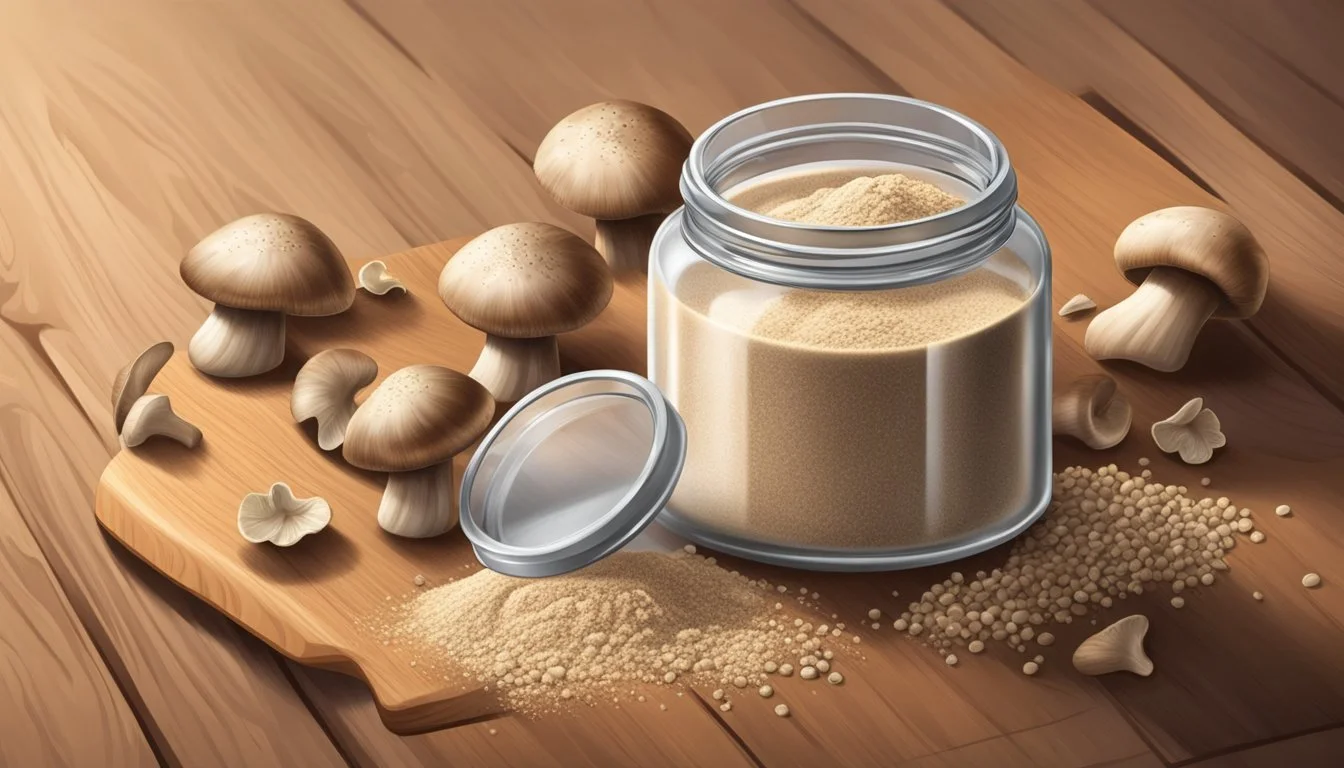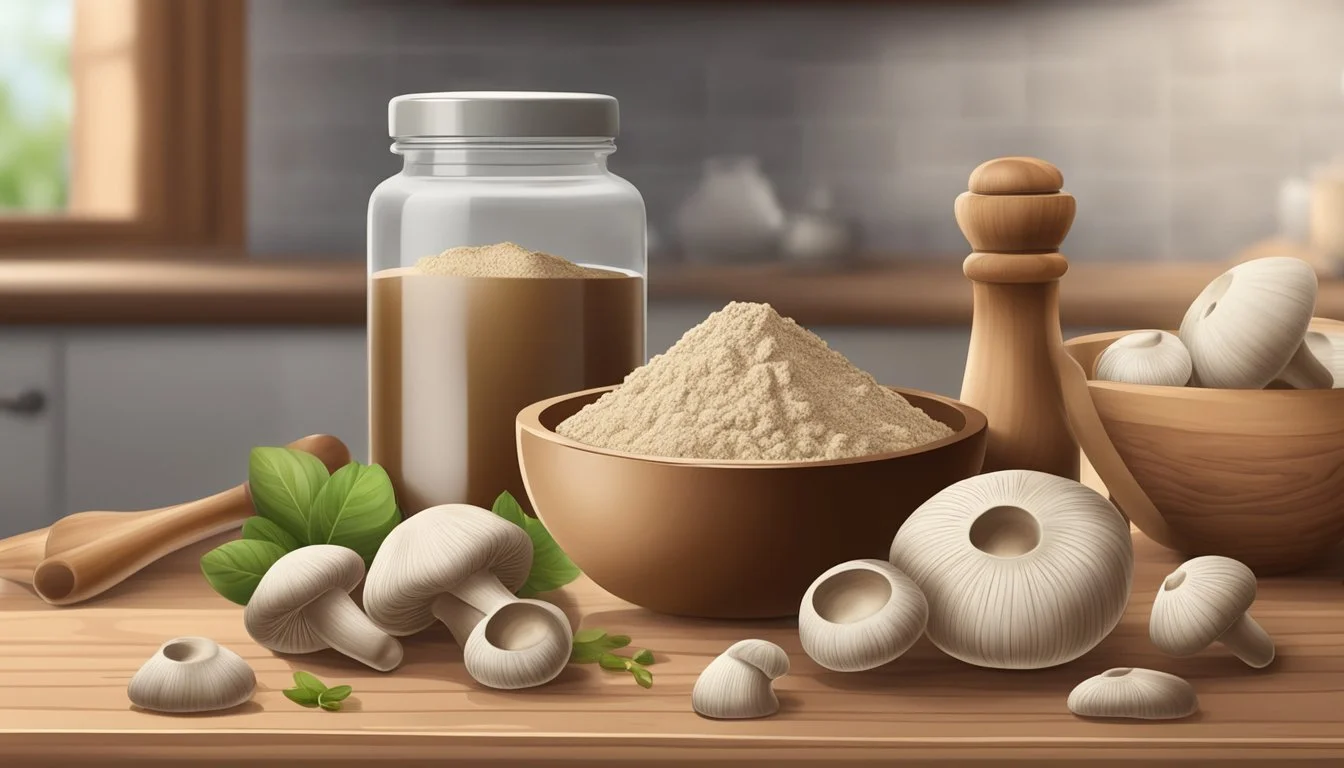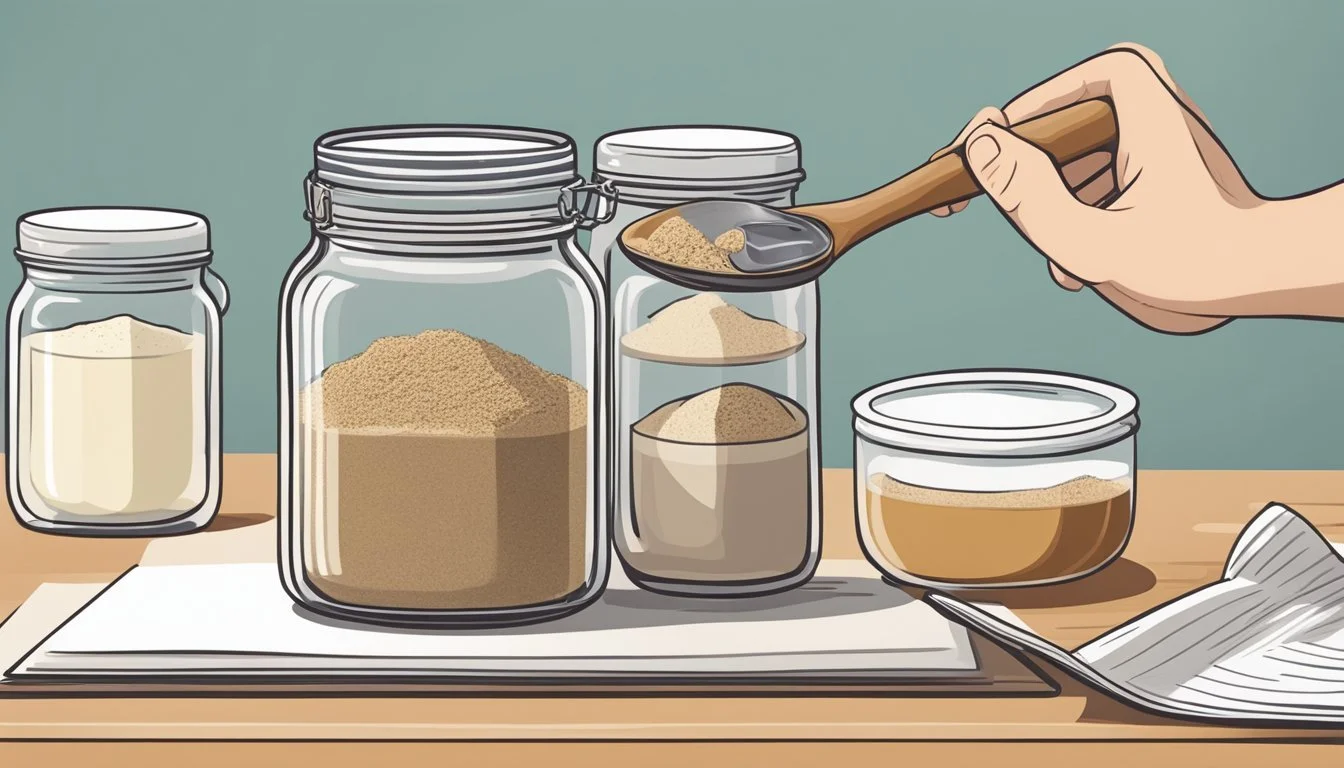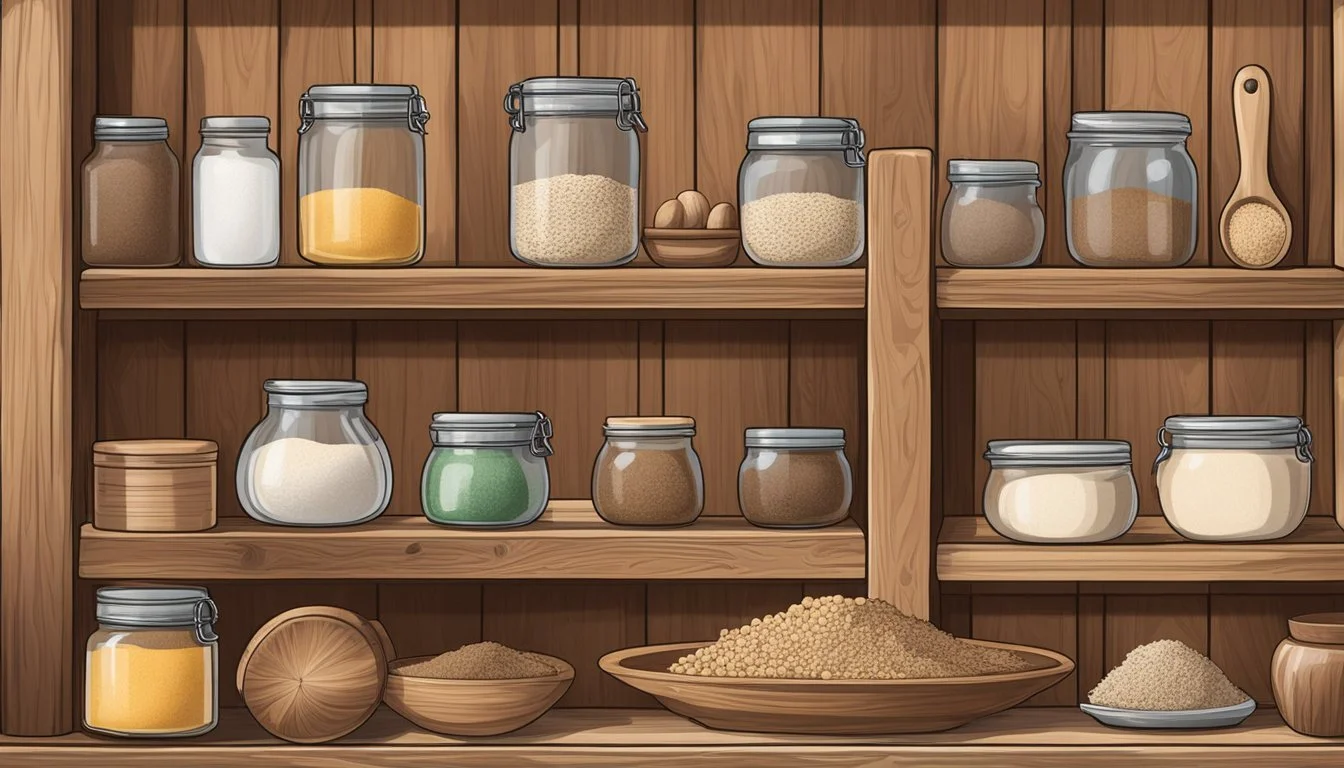Agaricus Mushroom Powder Substitutes
Top Alternatives for Your Recipes
Finding suitable substitutes for Agaricus mushroom powder can be crucial for those looking to replicate its unique umami flavor and nutritional benefits. Some effective substitutes include garlic powder, which shares a similar texture and can infuse a distinctive taste into dishes, though it lacks the exact flavor profile of mushrooms. Alternatives like shiitake powder or other mushroom powders can also provide a rich umami flavor, while offering a good source of protein and various health benefits such as potential anti-inflammatory and cholesterol-lowering properties.
For those looking for a more straightforward substitution, soy sauce can often fill the gap by imparting a deep umami essence. Though it doesn't match the nutritional profile of mushrooms, it serves as a quick fix in savory recipes. Vegetable bouillon, rich in flavor and easy to find, is another versatile option that can seamlessly blend in various dishes while providing some of the savory depth typically offered by Agaricus mushroom powder.
Whether for dietary restrictions or simply running out of Agaricus mushroom powder, these substitutes ensure that recipes retain their intended flavor and nutritional value. Exploring these alternatives allows for flexibility in the kitchen without compromising on taste or health benefits.
Understanding Agaricus Mushroom Powder
Agaricus mushroom powder, derived from various species including Agaricus bisporus, is known for its beneficial nutritional profile and health-enhancing properties. It is rich in essential nutrients and actively supports overall well-being, particularly by boosting immune function and providing antioxidants.
Nutritional Profile and Health Benefits
Agaricus mushroom powder offers a rich composition of vital nutrients. Vitamins such as B2 (riboflavin) and B3 (niacin) are present, promoting energy production and metabolic health. It also includes fiber, essential for digestive health and maintaining a healthy gut.
Containing potassium, it helps manage blood pressure and supports heart health. Antioxidants found in the powder, including polyphenols and selenium, combat oxidative stress, reducing the risk of chronic diseases.
Furthermore, the powder bolsters the immune system with bioactive compounds like beta-glucans, known for their immunomodulatory effects. Regular consumption can enhance immune response, making it especially beneficial during illness-prone periods. Incorporating Agaricus mushroom powder into diets can thus aid in achieving multiple health benefits.
Common Uses of Mushroom Powder
Mushroom powder is a versatile ingredient with a variety of culinary and potential medicinal applications. It can enhance flavors in dishes and may offer health benefits related to digestion, inflammation, and blood glucose levels.
Culinary Applications
Mushroom powder is prized for its umami and earthy flavors. Cooks often use it to add depth to soups, sauces, and stews. It can be sprinkled on pizza for an extra layer of flavor or mixed into marinades for meats and vegetables.
In addition to enhancing flavor, mushroom powder serves as a thickening agent in gravies and creams. It is also popular in vegetarian and vegan dishes, providing a meaty texture to meals made with tofu, seitan, or tempeh.
Potential Medicinal Uses
Mushroom powder may offer several health benefits. It is known to support digestion thanks to its high fiber content. Some studies suggest it can help reduce inflammation and potentially assist in regulating blood glucose levels.
Shiitake and other mushroom powders have been studied for their anti-microbial properties. Additionally, compounds in certain mushroom powders might support the immune system and promote overall well-being. More research, however, is needed to confirm these effects.
In summary, culinary and medicinal applications highlight the valuable roles that mushroom powder can play in both cooking and health.
Choosing Mushroom Powder Substitutes
When selecting substitutes for Agaricus mushroom powder, consider the flavor profiles, texture, and nutritional value to ensure the best fit for your recipes.
Considering Flavor Profiles
Flavor is crucial when choosing a substitute. Garlic powder and nutritional yeast can both enhance the umami taste of your dishes, though they bring different primary flavors. Garlic powder provides a distinctive, savory taste, while nutritional yeast adds a nutty, cheesy flavor. Another option, dried truffles, offers earthy and slightly sweet notes but can be pricey. The choice of substitute should align with the desired taste of the final dish.
Understanding Texture and Consistency
Texture affects how a substitute blends into recipes. Garlic powder and nutritional yeast approximate the fine, dry consistency of mushroom powder, making them suitable for most applications. Tofu, particularly firm tofu, offers a meaty flavor and spongy texture, which becomes more meat-like when cooked. This makes it a viable option for recipes where a solid texture is essential. Each substitute's consistency must interact well with other ingredients to maintain dish quality.
Nutritional Value Considerations
Nutritional content varies among substitutes. For instance, nutritional yeast is rich in B vitamins and can contribute to iron intake. Shiitake mushroom powder is another good alternative with potential health benefits such as cancer prevention and anti-inflammatory properties. It includes significant amounts of protein, copper, vitamin B5, and vitamin D. Assessing the nutritional profile of each substitute ensures that it aligns with dietary and health goals.
Types of Mushroom Powder Alternatives
For those seeking substitutes for Agaricus mushroom powder, both plant-based and meat-based options can provide similar flavors and textures in recipes. Each alternative offers unique benefits and can cater to dietary preferences.
Plant-Based Substitutes
Garlic Powder: Garlic powder shares a similar texture to mushroom powder and enhances the umami flavor in savory dishes. While its taste is distinct, it works well as a substitute in various recipes. Nutritional Yeast: This savory, nutty, and cheesy powder enhances umami notes and serves as a good alternative. It is also rich in nutrients like vitamin B12 and proteins. Tofu and Tempeh: For those looking for texture along with flavor, tofu and tempeh are excellent options. Both are versatile and absorb flavors well, making them suitable for various dishes that call for mushroom powder.
Meat-Based Substitutes
Chicken Bouillon Powder: This powder is a suitable substitute for those who include meat in their diet. It adds a deep, savory flavor that can replace mushroom powder in soups and sauces. Beef Stock Powder: A rich and flavorful option, beef stock powder can enhance the depth of flavor in dishes. It works particularly well in stews and casseroles where a hearty taste is desired. Both chicken and beef alternatives provide a protein boost and are readily available in most grocery stores, offering convenience and a similar texture to mushroom powder.
Homemade Mushroom Powder Substitutes
Creating homemade substitutes for Agaricus mushroom powder is both cost-effective and allows for customization. This guide will show you how to use fresh ingredients and blend seasonings to replicate the flavor and nutritional benefits of mushroom powder.
DIY Mushroom Powder With Fresh Ingredients
Fresh mushrooms can be transformed into a versatile powder using a simple process. Start by slicing mushrooms (button, shiitake, or any variety) and then dry them in a dehydrator or an oven set to low heat. Once fully dried, use a food processor or coffee grinder to pulverize them into a fine powder.
For added depth of flavor, consider mixing dried garlic powder or thyme with the mushroom powder. Storage in an airtight container ensures long-lasting freshness. This homemade powder can be a direct substitute in any recipe needing Agaricus mushroom powder, providing a natural source of umami and nutrients.
Creating Blended Seasoning Mixes
Blending mushroom powder with other pantry staples can create unique seasoning mixes. An excellent combination includes mushroom powder, nutritional yeast, and a small amount of salt and thyme. This blend infuses dishes with a rich, savory taste reminiscent of traditional mushroom powder but with added nutty and cheesy undertones from the nutritional yeast.
Another popular mix combines parmesan cheese with mushroom powder, enhancing the umami profile and creating a seasoning perfect for pasta, soups, and sauces. Adjust the ratios according to personal preference, but a good starting point is equal parts mushroom powder and parmesan cheese.
By experimenting with these ingredients, cooks can customize flavors to their liking, ensuring a perfect match for any dish.
Substitutes for Specific Dishes
Selecting the right substitute for Agaricus mushroom powder can be crucial depending on the dish. Below, we explore options specific to soups, sauces, main courses, side dishes, and appetizers, focusing on taste, texture, and nutritional value.
Replacing Mushroom Powder in Soups and Sauces
When substituting Agaricus mushroom powder in soups and sauces, umami seasoning can be a suitable alternative. It mimics the savory profile of mushroom powder, enhancing the richness of broths and cream-based sauces.
Garlic powder also works due to its similar texture, but be mindful of its stronger, distinct taste. For a completely different flavor profile, dried truffles offer a nutty and earthy complexity, though they can be an expensive substitute.
Alternatives for Main Courses
For main courses like stir-fry or kebabs, replacing Agaricus mushroom powder requires alternatives that match its robust umami flavor and sometimes its texture. Dried shiitake mushrooms ground into powder can be an excellent choice, boosting both flavor and nutrition.
Soy sauce or Worcestershire sauce can also add depth, especially in meat dishes. When sautéing, chestnut mushrooms minced finely can substitute the powder while providing similar health benefits.
Adapting Side Dishes and Appetizers
In side dishes and appetizers, select substitutes that preserve the integral taste and texture. Garlic powder is again a viable option for items like dips and spreads, bringing a complementary flavor profile.
When making mushroom-flavored butter or bread spreads, nutritional yeast can serve as a good alternative due to its umami quality. For dishes like stuffed mushrooms or savory tarts, fine powders from porcini or shiitake mushrooms enrich the dish with a nuanced earthiness.
Tables and lists can organize the choice effectively:
Dish Type Substitute Options Soups and Sauces Umami seasoning, Garlic powder, Dried truffles Main Courses Dried shiitake powder, Soy sauce, Worcestershire Side/Appetizers Garlic powder, Nutritional yeast, Porcini powder
Each substitute has unique properties, ensuring the dish retains its desired characteristics.
Shopping Tips for Mushroom Powder and Substitutes
When shopping for mushroom powder, freshness and quality are key. Check the packaging date to ensure it is recent. Organic options are preferable, as they usually contain fewer pesticides and additives.
Mushroom powders from shiitake, porcini, or oyster mushrooms offer distinct flavors and nutritional benefits. Look for labels that specify 100% mushroom content without fillers.
Best Mushroom Substitutes
Garlic Powder: Similar texture; different but complementary flavor.
Nutritional Yeast: Nutty, cheesy flavor; enhances umami taste.
Dried Truffles: Expensive but rich, earthy taste.
When considering substitutes, match the flavor profile of the powder you're replacing.
Comparing Fresh and Dried Mushrooms
Type Fresh Dried Button Mushrooms Widely available, mild flavor Rarely dried, generally fresh Chanterelle Mushrooms Delicate, fruity notes More intense when dried Porcini Mushrooms Strong, earthy taste Very concentrated flavor
Tips:
Buy from reputable grocery stores or specialty shops known for quality mushrooms.
Smaller quantities often ensure freshness.
Bulk buying can save money but check storage recommendations to maintain quality.
For those making their own powder, a selection of dried shiitake or porcini mushrooms provides intensive flavors and customizable blends.
Health Considerations When Using Substitutes
When substituting Agaricus mushroom powder, it is crucial to consider dietary restrictions, macronutrient management, and potential side effects. This ensures a safe and beneficial experience with the alternative products.
Dietary Restrictions and Food Allergies
Individuals with dietary restrictions or food allergies must carefully evaluate substitute ingredients. Many mushroom powder alternatives contain gluten, soy, or nuts, which can trigger allergic reactions.
Substitute options like nutritional yeast may be unsuitable for those with yeast sensitivities. For individuals with cholesterol concerns, ensure substitutes do not elevate cholesterol levels as some plant-based alternatives might. Always read labels for hidden allergens and consult healthcare providers if unsure about specific dietary needs.
Managing Macronutrient Intake
Macronutrient balance is essential when switching from Agaricus mushroom powder to another supplement. Mushroom powder is typically low in fat and rich in essential amino acids, contributing to a balanced diet.
Some substitutes may have different macronutrient profiles, which could affect dietary fat, protein, and carbohydrate ratios. When choosing alternatives, look for options that maintain the necessary vitamin B12 levels if you rely on mushrooms for this nutrient.
Potential Side Effects
Substituting Agaricus mushroom powder may introduce new side effects. Some alternatives can cause mild digestive issues like bloating or gas, especially for those with sensitive stomachs.
Certain substitutes may exacerbate inflammation or interact with medications. For example, those with pre-existing conditions or taking blood thinners should consult a healthcare provider before using mushroom alternatives. Monitoring one's response to new supplements is vital, and any adverse effects should be promptly discussed with a medical professional.
Storing Mushroom Powder and Substitutes
Mushroom powder and its substitutes need proper storage to maintain their flavor and potency.
An airtight container is crucial. It prevents moisture and air from degrading the quality. This helps to retain the distinctive taste and nutritional benefits.
For long-term preservation, store the powder in a cool, dark place. Exposure to light and heat can expedite deterioration.
Most mushroom powders and substitutes have a shelf life of up to one year if stored correctly. However, it's best to check specific product recommendations for optimal storage periods.
Here's a quick guide:
Item Storage Method Shelf Life Mushroom Powder Airtight container, cool dark place Up to 1 year Garlic Powder Airtight container, cool dark place Up to 1 year Nutritional Yeast Airtight container, cool dark place Up to 2 years
Check periodically for any signs of spoilage, such as off smells or discolored particles. This ensures the substitutes remain high-quality and safe to use.
When storing homemade blends, like a custom mushroom powder mix, use similar guidelines. Label containers with preparation dates to track freshness.
Proper storage not only preserves flavor but ensures safety and effectiveness, making each use as beneficial as the first.











